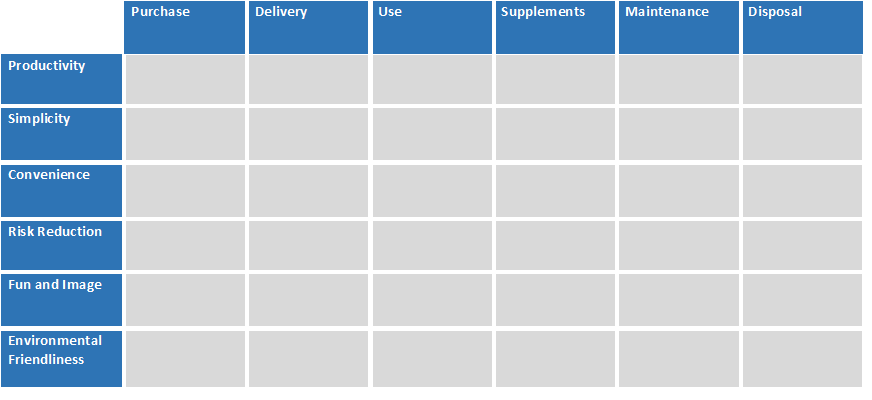Competition is a natural part of business. When giving an option between different businesses, why would a customer pick one over the other? Is it because it offers a better product or service? Is it because it offers cheaper products or services? Take away the competition; what do you have? Even at baseline, customers need a reason to do business with a business. They have an innate internal standard with which they judge a business.
It is not just price or product that influences a customer’s decisions. It is the interplay between what is being offered and the costs of it as it aligns with what a customer values. A good product or service alone is not enough, nor is a cheap price. A customer is always subconsciously analysing if it is worth it.
Customer value essentially comes down to what customers value. However, it works both ways. It is both the value a customer brings to a business and the value that a customer sees in a business.
Breaking it down…
As a concept, customer value is quite intuitive. You want to find the goldilocks zone between the customer side of value and the business side of value. It helps to construct an abstract concept such as customer value into something a bit more tangible in order to act upon it.
In a simplistic way, you can model it as Total customer benefits – Total customer costs = Customer Value for both sides. You can substitute numerical values into that equation, but while it is easy to swap costs with monetary price, it is not limited to that. Assigning values to different factors is not always a simple thing, but it constitutes the backbone of understanding customer value. So how can we do that?
The authors of “Blue Ocean Strategy” put forth one way of categorising these benefits. This is known as the Buyer’s Utility Map. It was originally meant for strategic positioning, comparing what your business focuses on compared to competitors, but it can be adapted for customer value modelling all across the customer experience life cycle. Here, the buyer’s journey is split into six phases across six utility levels.

- Purchase – How easy is it for customers to purchase? Is it convenient to order? Is the means by which things can be purchased important for your specific products or services?
- Delivery – How important is delivery time? After delivery, are there other valued services like installation?
- Use – What are the most valuable functions of the product? Is it easy to use; does it require training or a manual? Is its function easily replaceable by something else?
- Supplements – Does it require additional things to fully work? How easy or expensive is it to acquire these additions?
- Maintenance – How easy or expensive is maintenance if maintenance is required? How long will maintenance take?
- Disposal – Does the product or its use create waste? How environmentally friendly is the product? Is the product easy to get rid of?
For each of those phases, ask what can be valued by customers and identify what your business offers in relation to that. Think about what may be valued over others in the context of what you are offering.
A group of researchers studied customer value and asked a group of participants what they valued in a set of products. Then, they further asked what made the thing they valued valuable – how did it benefit them? They then asked how that benefit helped them and what made that benefit valuable. They repeated this in a stepwise manner until they came across common basal values. These values are far abstracted from what customers may consciously value, but understanding them and how to interpret benefits in relation to these values serves as another way of modelling customer value. These are:
- Accomplishment
- Belonging
- Self-fulfillment
- Self-esteem
- Family
- Satisfaction
- Security/Peace of Mind
- Control
For example, car buyers value rearview mirrors. Why? Well, it helps them to see behind them. What would that help with? Seeing if there are other cars behind them. So what? That helps them to make less accidents. How? They can make more informed decisions while driving and just be safer in general. As you can see, it ultimately comes down to a sense of control or security.
Even with these frameworks though, it is up to you to decide how different factors are weighed. In order to figure out how you can more accurately gauge what your customers value, you can read this article.











